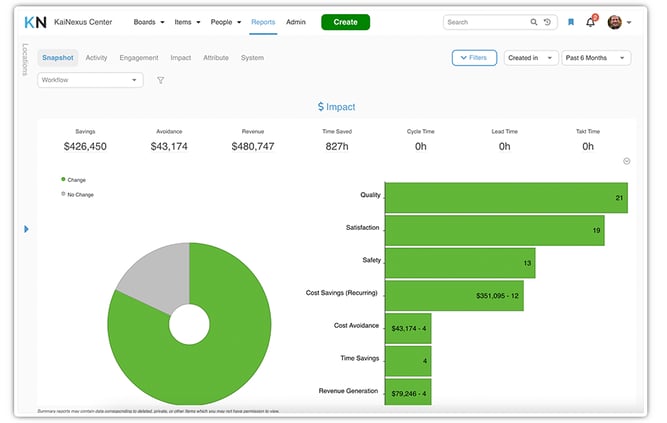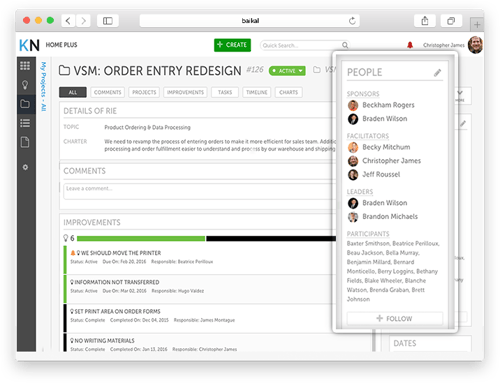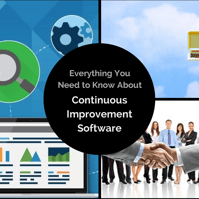
Kaizen Events
Focused Improvement
Strategic Events Solving Critical Problems
Kaizen events are designed to tackle problems that can be addressed in short order (3-5 days), but they can also have a more profound impact on the organizations that use them. Most talk about Kaizen events focuses on the resulting process changes, but these rapid improvement events can do more than change processes. They can change people. When that happens, your Kaizen event becomes the gift that keeps on giving.
Here are a few ways that Kaizen events can have a profound impact on participants.
More Holistic Thinking
Most organizations are structured by function, which is convenient, but can also create a situation where no one understands the way work flows across the entire value chain. Everyone may be convinced that their piece of the process is perfect, without understanding how it contributes to problems downstream. Kaizen events give participants the opportunity to explore processes more broadly and gain a better understanding of how value is delivered to the customer. This may have the immediate benefit of resolving a particular problem, but it also changes the way people think and may lead to the identification of more opportunities for improvement, increased collaboration, and better decision making that last long after the event.
Better Meeting Management
A well-executed Kaizen event requires a great deal of pre-planning. The right people must be involved. The objectives need to be clearly communicated, and it is essential to start and end on time. They are facilitated by someone who ensures that all of the stakeholders have a voice and that consensus is reached before action is taken. What if all of your meetings were run that way? Because Kaizen events are so condensed, focused, and high-profile, they force people to develop excellent meeting management skills that can be conscripted for regular use.
Improved Collaboration and Problem Solving Skills
To solve a problem in the course of only 3-5 days, people must learn to focus, listen to each other, ask insightful questions, and compromise. The team quickly builds a “we’re all in this together” attitude and solving the problem in question becomes more important than individual egos or fiefdoms. Effective communication is essential to success and a common language emerges. This collaborative spirit doesn’t end when the event is over. Participants gain a new appreciation for each other and for the power of cooperation.
A lot can be accomplished during a Kaizen event, but the particular improvement is only the tip of the iceberg. Improving processes is valuable, improving people is priceless.
Step 1: Document and agree on the current state. Define desired state.
When we coach new customers on Kaizen event execution, they often figure that simply documenting the current situation will be a piece of cake.
It rarely is.
Team members can have wildly different perceptions of the current state, depending on what their role in the process is and what their goals are. The conversations that occur as the group tries to reach consensus on the way things are can be extraordinarily revealing, bringing to light complications in the process that may otherwise have been overlooked. Once an understanding of the current state has been documented, the team can turn their focus to the desired state.
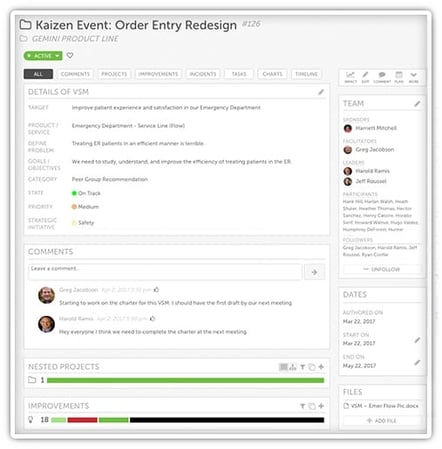
Kaizen software gives your team a single platform from which to manage improvement. They'll set up a Kaizen Event using a template configured by your improvement coaches, categorize and prioritize it as needed, and then use KaiNexus as the common place to discuss the Event and subsequent improvements. They'll set up charts to identify the current state and KPIs, which they can then track here going forward. It's easy to attach project charters and other relevant links and files, creating a permanent knowledge repository with all event information right off the bat.
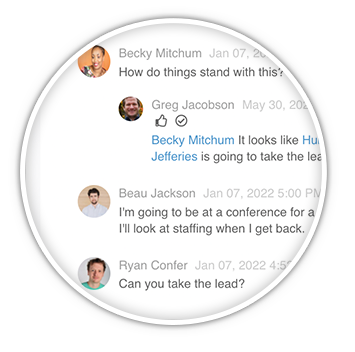
Step 2: Discuss possible solutions. Agree on changes to implement.
Don’t make the tempting mistake of skipping step 1 and jumping into step 2. That leads to changes that don’t really address the root causes of problems and fail to create measurable impact.
When discussing possible solutions, it is important for the event leader to encourage participation and make sure that everyone’s ideas are heard.
No participant should go into the event with an unchangeable idea about what the right solutions may be.
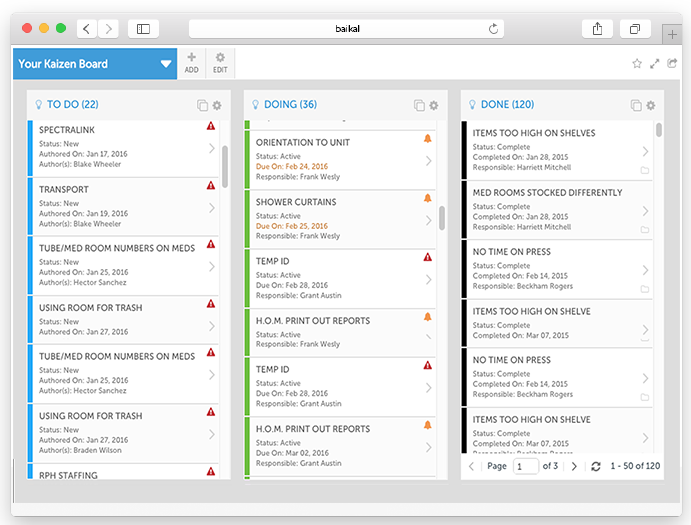
Step 3: Implement Improvements
One of the things that make Kaizen events such an effective tool for improvement is that the changes are implemented in short order. That’s why Kaizen Events should only be used to address problems that can be tackled quickly. If the improvements can’t be implemented in the time frame of your event, then the situation is probably best suited for a different improvement methodology.
KaiNexus provides all the tools you need to implement improvements in a Kaizen Event, from capturing the intial ideas and assembling an implementation team to tracking KPIs and measuring impact. If improvements turn up that are decidedly outside the scope of the Event, leaders can defer or reassign them to ensure that no ideas are lost or ignored.
Step 4: Refine improvements, develop new Standard Work
After the improvements are implemented and observed, the team may want to make some tweaks to the execution to come up with the final process changes.
After that occurs, the new Standard Work can be adopted and documented. No improvement can be said to be fully implemented until a new Standard Work has been agreed upon and implemented.
KaiNexus makes the back-and-forth your teams need to agree on new standards, validate results, and accurately log impact simple. New standard work is logged in the system, and going forward, it'll show up when people submit improvements similar to the work you've done. That way, your organization isn't reinventing the wheel, and everyone works together to improve the standard.
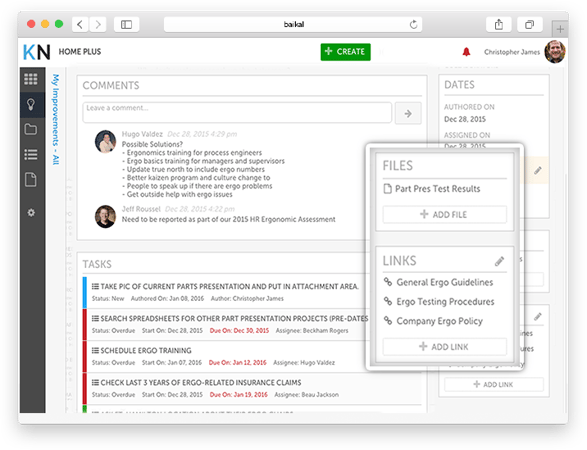
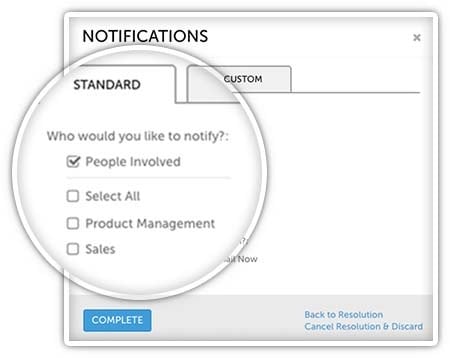
Step 5: Institutionalize the Improvement
Institutionalizing the improvement involves training the impacted employees on the new standard work, and communicating the results to management and the rest of the organization. These final steps are critical if you want changes to be effective and celebrated. While these steps end the event, it does not mean that the team’s work is done. It simply signals the beginning of the follow-up phase.
One problem faced by organizations attempting to utilize Kaizen Events without kaizen software is that it's nearly impossible to share the new standards efficiently and effectively around the organization. KaiNexus solves this problem by standardizing the resolution process, including a step in which leaders select with whom the improvements should be shared. This way, your Kaizen Events have a lasting, widespread impact that doesn't expire as soon as the event concludes.
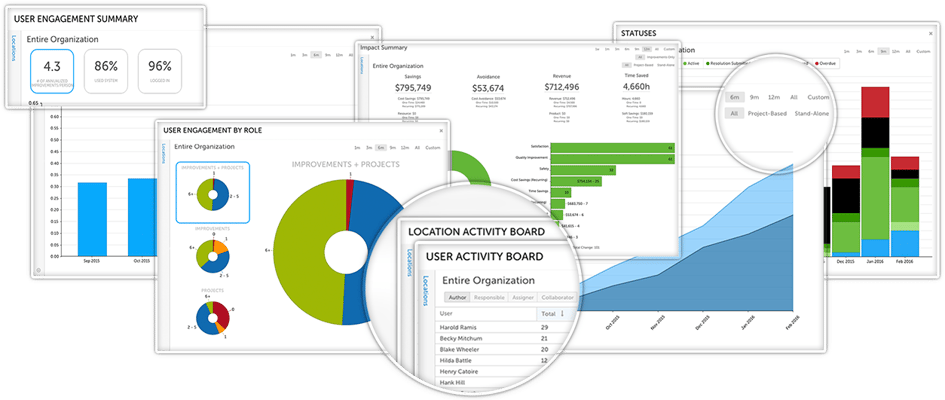
Improvement Software Book
Checklist
For Planning an Awesome Kaizen Event
Kaizen events are an effective tool for harnessing the innovative ideas and creativity of your workforce to implement rapid improvement in a specific area of the organization. In the literature about Kaizen events, a lot of emphasis is put on the event itself, but we have found that often the difference between success and failure is actually the pre-event planning phase. Here are some critical items that should be part of your event preparation.
Choose a Qualified Facilitator
It is crucial to have a strong leader to facilitate the event. Some organizations choose to hire a professional consultant while others select an employee who has been trained for the role.
In either case, you want someone who understands the philosophy of Kaizen and who has experience or education on the improvement techniques that will be used. They should be capable of helping the team stay on target and make decisions that will lead to the best possible results. They should have great communication skills and be able to help the group work through conflict.
Get Enthusiastic Support from Management
Although the executive team may not be directly involved in your Kaizen event, it is essential for them to clearly understand and endorse it. It is also important that they communicate this support to the entire organization, if possible, or at least those directly impacted.
If it is unclear that management is fully behind the effort, it is difficult to get whole-hearted engagement from employees. Events without executive endorsement also tend to result in changes that don’t last and improvement results that degrade quickly.
Define the Scope of the Event
Keep in mind that Kaizen events are designed to target very specific areas of the organization. They are not well suited for major structural changes that cross many departments.
At the outset define exactly what teams and departments are involved. The event should have a clear purpose or charter. This includes a clear definition of the problem you are trying to solve. For Lean organizations, this very often means defining a specific waste that will be targeted.
Select the Team
In most cases, the team members will consist of people that work in the area targeted by the event, along with people from other involved constituencies. They may include people who produce work that is pulled into the target process and the internal customers of the results. Subject matter experts, vendors, and sometimes even customers can add value in certain situations.
It is also a good idea to consider each Kaizen event a training opportunity and include people who may not be directly involved in this particular improvement, but who may be important to a future Kaizen event.
Determine Success Metrics
It is important to understand exactly what success looks like and how it will be measured. If you are looking to improve efficiency, for example, you need to understand what data will be gathered to benchmark efficiency before the event and improvement afterward. Other metrics might include: cost, space used, man hours, travel time, defects, and inventory.
Pre-Event Training
Depending on the experience of your team, it may be necessary to train members on the principles of Kaizen and the tools and techniques that will be used. They should have an adequate understanding of your improvement software and know exactly how it will be used before, during, and after the event. Training should include information about their role and how their individual performance during the event will be assessed.
Event Roadmap
You’ll want to have an outline of what will actually happen during your Kaizen event. Although everything that will happen can’t be predicted, a rough timeline is essential.
It might look something like:
Day 1: Document and agree on the current state. Define desired state.
Day 2: Discuss possible solutions. Agree on changes to implement.
Day 3: Implement improvements
Day 4: Refine improvements, develop new standard work
Day 5: Train on new standard work. Communicate changes to management. Celebrate success.
The roadmap should also include a list of resources that may be required. This could range from simple office supplies like labeling machines, to outside resources like movers or electricians.
Launching a successful Kaizen event is admittedly a lot of work, but the results can be significant and long lasting. In addition to the specific target improvements, a well-executed event produces experienced employees who will perform even more effectively on the next one. If you put in the effort up front, you can begin your event confident that your improvement goals will be achieved.
Do You Need Kaizen Event Software?
Here's How to Decide
What Are You Trying to Accomplish?
Set aside the specific goals of any one particular event for a minute, and examine the bigger picture related to improvement events. Think about why you do them. Do you hope to achieve lasting change or are you looking for a quick fix? If what you are after is improvement that will last and have a big impact on the organization, then it doesn’t make too much sense to conduct your event without software.
With software designed to support improvement, you’ll have a complete record of all of the decisions and ideas discussed during the event. All of the related documents will be available for any stakeholder to review. The current state analysis, event goals, and final outcomes can be shared with everyone in the organization. Without technical support, activities, documents, and decisions will be scattered about in email chains and stored on personal PCs, making the context of the event undecipherable and debatable.
If you want long-term knowledge that outlives the event and spreads beyond the initial context, you need improvement software.
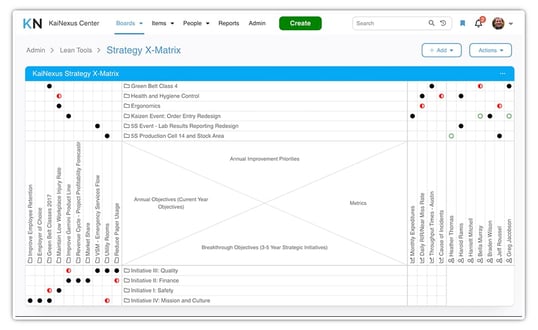
How Will You Measure Success?
At the outset of your Kaizen Event, you’ll want to define its goals and determine what success looks like. It is usually fairly easy, with or without software, to decide if your event achieved its immediate aims, but what about the results over time?
Some improvements take a while to yield any measurable results at all. Others result in cost or productivity savings that recur month after month.
With the right software, it is easy to calculate the impact of improvement for months, even years after an improvement blitz.
Who is Going to be Involved?
Teams that are used to working closely together often have very good communication habits and can get a lot done as a group. However, Kaizen Events often involve cross-functional team members that have different communication styles and preferences. This causes discord and slows down the pace of improvement, a deadly sin during rapid improvement events. Improvement software provides a common space for collaborative work and defines a unified language. Everyone gets easily on the same page and enjoys smooth sailing.
So sure, you can do a Kaizen Event without software…unless you want lasting improvement, long-term measurement of results, and cross-functional collaboration. In that case, it makes sense to find a platform that will support your efforts. Look for a solution that will capture all of the activities associated with the event, provide notifications and alerts for quick action, make it easy for team leaders to identify roadblocks, and calculate the impact of the event over the long run. You’ll be glad you did.

![[Watch Now] Top-Down Improvement Software Demo](https://no-cache.hubspot.com/cta/default/326641/2eef07b8-9131-49c5-9adc-bafb52e8796e.png)

